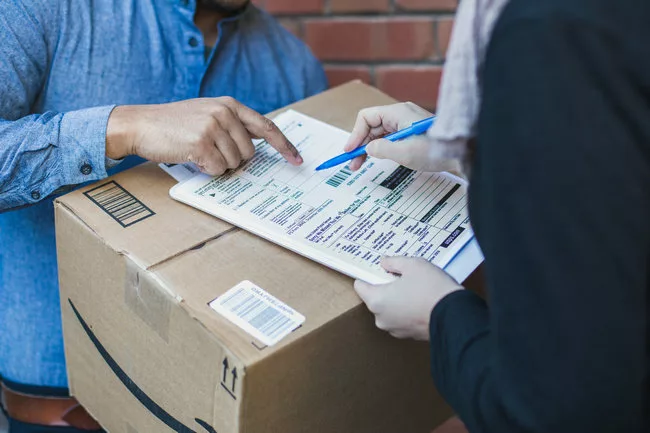
What is the Packing List for Shipment
When it comes to international trade, a shipping packing list is a crucial document that provides important information about the shipment. A packing list is a detailed document that outlines the contents of a shipment, including how it is packed, the number of packages, the dimensions and weight of each package, and the marks and numbers that are noted on the outside of the boxes.
A packing list is a document that is used to provide information to the exporter, international freight forwarder, and ultimate consignee. It helps ensure that the shipment is properly identified, handled, and transported. The packing list is also used to verify that all items in the shipment have been received and accounted for.
In addition to the basic information about the contents of the shipment, a packing list can also include additional details such as the country of origin, the value of the goods, and any special handling instructions. The packing list is an essential document that helps to ensure that the shipment is handled and transported safely and efficiently.
Types of Shipment
When it comes to shipping goods, there are several types of shipment you can choose from. The type of shipment will depend on the size and weight of your cargo, as well as your budget and timeline. Here are some of the most common types of shipment:
- FCL (Full Container Load): FCL stands for Full Container Load. This means that you are renting an entire container for your shipment. FCL is ideal for larger shipments that take up the entire container. You can choose from different container sizes, including 20ft, 40ft, and 45ft containers.
- LCL (Less than Container Load): LCL stands for Less than Container Load. This means that you are sharing a container with other shippers. LCL is ideal for smaller shipments that do not take up an entire container. You will only pay for the space that your cargo takes up.
- Breakbulk: Breakbulk is a type of shipment that involves cargo that is too large or heavy to fit into a container. This type of shipment is usually transported on a flatbed truck or a specialized vessel. Breakbulk is ideal for oversized cargo, such as machinery or heavy equipment.
Creating a Packing List: The Essential Components
A packing list must contain the following essential components:
Shipper and Consignee Details
The packing list should include the shipper and consignee’s details, including their name, address, and contact information. This information helps customs officials identify the shipment’s origin and destination.
Goods and Packaging Information
The packing list should contain a detailed description of the goods being shipped, including their weight, quantity, dimensions, and packaging information. It should also include the gross weight and net weight of the shipment. The packaging information should specify the number of boxes or units being shipped.
Shipping and Destination Details
The packing list should specify the carrier, container, transportation method, and country of final destination. It should also include the port of loading and discharge, vessel or aircraft name, and voyage number. This information helps customs officials identify the shipment’s transportation details.
Invoice and Order Details
The packing list should include the invoice number, bill of lading number, and order number. It should also include the purchase order number, commercial invoice number, and export invoice number. This information helps customs officials verify the shipment’s value and origin.
Additional Essential Information
The packing list should include any additional essential information, such as reference numbers, buyer and seller details, exporter and importer details, freight forwarder details, and logistics company details. It should also include customs clearance information, such as the customs broker’s name and contact information, certificate of origin, country of origin, and seal number.
Dealing with Special Cases

When shipping goods, there are special cases that require additional attention and care. Here are some tips on how to handle these situations:
Handling Hazardous Goods
If you are shipping hazardous goods, you need to follow specific regulations and guidelines to ensure the safety of the shipment. These regulations vary by country, so it’s important to research and comply with the regulations of the country you are shipping from and to.
Here are some general tips for handling hazardous goods:
- Properly label all hazardous goods
- Use appropriate packaging and labeling
- Provide accurate documentation
- Follow the regulations of the country you are shipping from and to
Managing Delays in Shipment
Delays in shipment can be frustrating, but there are steps you can take to manage them. Here are some tips:
- Communicate with your shipping provider to get updates on the status of the shipment
- Work with your shipping provider to find alternative routes or modes of transportation if necessary
- Be prepared to provide additional documentation or information if requested by customs or other authorities
- Consider purchasing additional insurance to protect against potential losses due to delays
Remember, delays in shipment can happen for many reasons, including weather, customs inspections, and logistical issues. It’s important to stay patient and work with your shipping provider to find a solution.
That’s it for dealing with special cases. Remember always to research and follow the regulations and guidelines for shipping goods, especially when dealing with hazardous goods. If you encounter delays in shipment, stay patient and work with your shipping provider to find a solution.
Documentation and Legalities
When it comes to shipping goods internationally, documentation and legalities are critical. A packing list is just one of the many documents required for international trade. It provides important information about the shipment and ensures that the shipment arrives safely.
In addition to the packing list, other documents may be required depending on the country of origin and destination. These documents include a letter of credit, electronic export information, shipping documents, supporting documents, export packing, unpacking note, delivery docket, delivery list, manifest, customer receipt, and inland bill of lading.
It’s important to note that each document serves a specific purpose and must be completed accurately. Failure to do so can result in delays, fines, or even seizure of the shipment. Therefore, it’s crucial to work with a knowledgeable freight forwarder who can guide you through the documentation process and ensure that all requirements are met.
Overall, documentation and legalities are an essential part of international trade. By understanding the requirements and working with a reputable freight forwarder, you can ensure that your shipment arrives at its destination safely and on time.
Final Delivery of Goods

Once your shipment has arrived at its destination, it’s time for the final delivery of goods. The delivery process will depend on the terms of the sale and the agreed-upon delivery method.
If you have chosen a delivery method that includes delivery to your door, the shipping company will handle the final delivery. They will contact you to arrange a delivery time and date. It’s important to be available during this time to receive the goods.
If you have chosen a delivery method that requires you to pick up the goods, you will need to arrange transportation to the pickup location. Once you arrive, you will need to provide the necessary documentation to receive your goods.
It’s important to inspect your goods upon delivery or pickup to ensure that they have arrived in good condition. If there is any damage or missing items, you should report it to the shipping company immediately.
Reimbursement for damaged or missing items will depend on the terms of the sale and the shipping company’s policies. It’s important to review these policies before shipping your goods to ensure that you are adequately covered in case of loss or damage.
In summary, the final delivery of goods will depend on the terms of the sale and the agreed-upon delivery method. It’s important to be available during the delivery time and to inspect your goods upon delivery or pickup. If there is any damage or missing items, report it to the shipping company immediately. Reimbursement for damaged or missing items will depend on the terms of the sale and the shipping company’s policies.
Why Choose Us? Luckystar Logistic
Stand out in the sea of delivery services by choosing us – we’re not just any company; we are experts in transportation! Offering industry-leading solutions, we take pride in providing premium shipping services at a fraction of the cost of other freight forwarders, both in China and across the globe. Here’s why partnering with us is the smart move:
Accuracy You Can Count On:
Say goodbye to delivery delays and hello to timely delivery, which is vital for businesses needing to deliver goods swiftly to their customers.
Your Passport to Global Reach:
Our wide network of delivery destinations virtually covers the entire globe, offering extraordinary opportunities for businesses aiming to expand their reach. You can be assured that your package will find its way to almost any corner of the world, taking your business global!
Track with Ease:
Say goodbye to guesswork. Our stringent procedures afford you a live tracking mechanism, making it easy for you to follow your shipment’s progress at every stage of its journey. Stay informed and enjoy peace of mind, knowing exactly where your shipment is anytime you need to know.
Personalized Service, Every Step of the Way:
One of our dedicated team members will personally oversee your shipment from start to finish. This, coupled with our commitment to transparency and constant communication, ensures you are kept updated on the progress of your cargo every step of the way.
Looking for a helping hand to assist you in completing the packing list for your shipment? Reach out to us. We’re always ready to help. Offering unbeatable rates for international shipping, our services are more affordable than you’d believe. Don’t hesitate! Get in touch with us today.
Frequently Asked Questions
What is the main purpose of a packing list?
A packing list serves as a detailed document that provides information about the contents of a shipment. The main purpose of a packing list is to ensure that the recipient of the shipment knows exactly what is included in the package. This document also helps to verify that the shipment has been packed correctly and that all items are accounted for.
Is it necessary to have a packing list?
Yes, it is necessary to have a packing list for most shipments. This document is required by customs officials in many countries and is also useful for the recipient of the shipment to ensure that all items have been received.
What is the difference between a packing list and a waybill?
A packing list provides information about the contents of a shipment, while a waybill is a document that accompanies a shipment and provides information about the shipment’s origin, destination, and transportation details.
What are common mistakes to avoid when completing a packing list?
Common mistakes to avoid when completing a packing list include failing to include all items in the shipment, failing to include accurate descriptions of each item, and failing to include the correct quantity of each item.
Is a packing list the same as a commercial invoice?
No, a packing list is not the same as a commercial invoice. A commercial invoice provides information about the value of the items being shipped, while a packing list provides information about the contents of the shipment.
What is the difference between a packing slip and an invoice?
A packing slip is a document that accompanies a shipment and provides information about the contents of the shipment, while an invoice provides information about the cost of the items being shipped.
